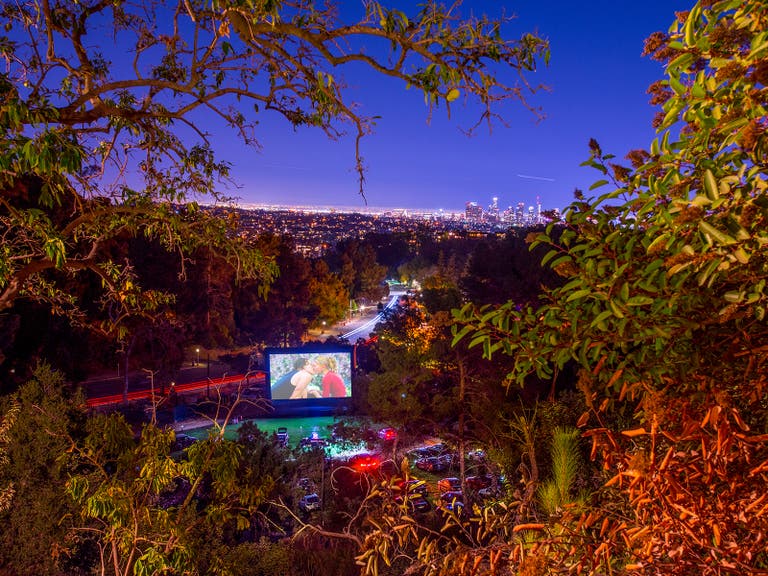Discover the Historic Theatres on Broadway in Downtown Los Angeles
Discover the great movie palaces of the Broadway Theatre District
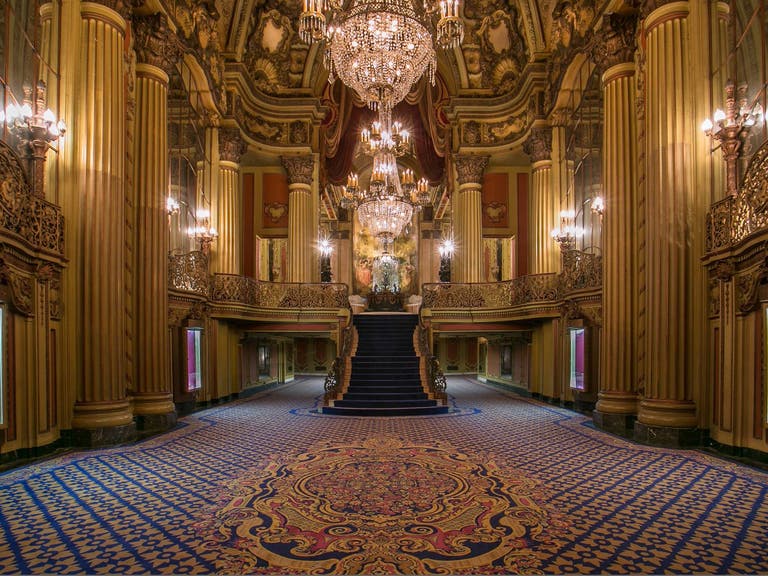
Stretching for six blocks from 3rd to 9th Streets along South Broadway in Downtown Los Angeles, the historic Broadway Theatre District includes 12 movie theatres built between 1910 and 1931. At its height, the neon-drenched district had the highest concentration of cinemas in the world, with seating capacity for more than 15,000 patrons. The Broadway Theatre District was added to the National Register of Historic Places in May 1979, the first and largest historic theatre district listed on the Register. It is the only large concentration of movie palaces left in the United States.
Efforts by the Los Angeles Conservancy, the Bringing Back Broadway initiative, the Broadway Theatre Group and the Los Angeles Historic Theatre Foundation have restored many of these theatres to their original splendor. New generations of Angelenos can now experience live performances and cultural events at these spectacular venues. Read on and discover the great movie palaces of the Broadway Theatre District.
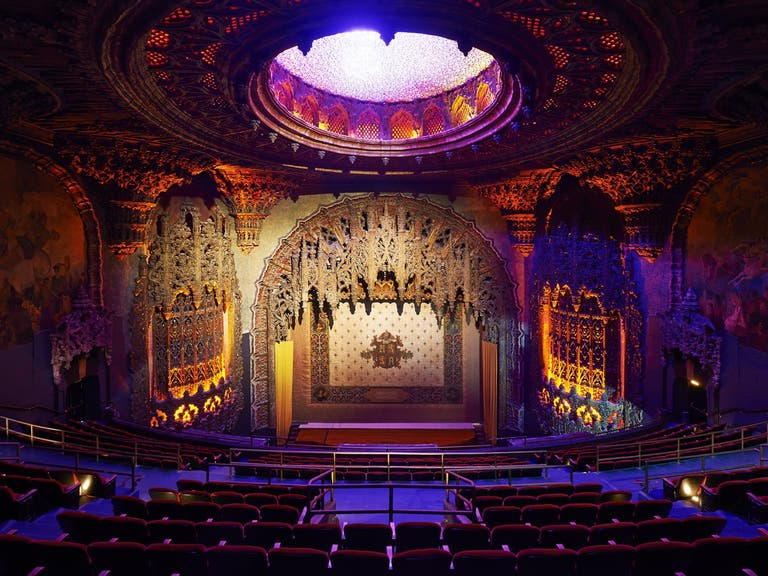
The Theatre at Ace Hotel
Located on Broadway and 9th Street, at the southernmost point of the historic Broadway Theatre District, the Ace Hotel Downtown Los Angeles was built as the United Artists Building in 1927. The 13-story building was designed by architect C. Howard Crane in a Spanish Gothic style, modeled after the Segovia Cathedral in Spain. The United Artists Theatre was the flagship movie theatre for United Artists, the film studio founded by Charlie Chaplin, Mary Pickford, Douglas Fairbanks and D.W. Griffith. The stunning 1,600-seat movie palace occupies three floors of the building. The interior was designed by Anthony B. Heinsbergen and features wall murals of the nascent movie industry and a dazzling ceiling dome with hundreds of crystal pendants.
Now known as The Theatre at Ace Hotel, the former UA Theatre is once again showing movies – both new releases and nostalgic selections, in partnership with the Sundance Institute, Cinespia and the Los Angeles Conservancy’s annual “Last Remaining Seats” program. It also hosts concerts, dance performances, stand-up comedy, and live reads and screenings like The Empire Strikes Back and the “Mad Men” series finale. Guests staying at the hotel have their pick of onsite entertainment nearly every night of the week. The theatre’s original box office has been taken over by Moon Juice, a juice shop that provides complimentary delivery to any of the Ace rooms.
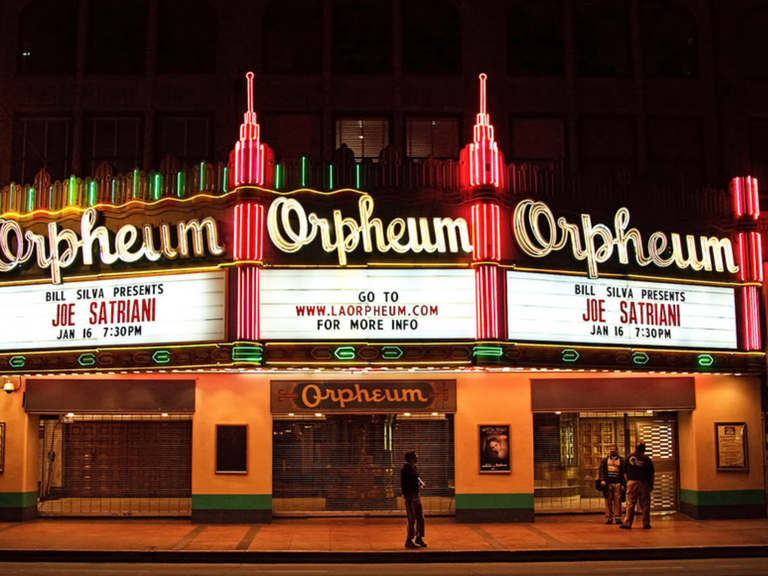
Orpheum Theatre
Since opening on Feb. 15, 1926, the Orpheum Theatre has hosted some of the greatest performers in entertainment history, including burlesque queen Sally Rand, the Marx Brothers, Will Rogers, a young Judy Garland (singing with her family as Frances "Baby" Gumm) and comedian Jack Benny, as well as jazz legends Lena Horne, Ella Fitzgerald and Duke Ellington. In the 1960s, the Orpheum presented rock and roll concerts by Little Richard, Aretha Franklin and Little Stevie Wonder. The restored theatre continues to host live music and is frequently used as a film location, such as Barton Fink, Last Action Hero, Ed Wood and The Artist. The Orpheum was designed with a Beaux Arts facade by architect G. Albert Lansberg, who also designed the Palace Theatre, The Wiltern Theatre, El Capitan and the Shrine Auditorium. The theatre’s Mighty Wurlitzer organ was installed in 1928 and is one of three pipe organs remaining in Southern California venues.

The Los Angeles Theatre
Designed by architect S. Charles Lee, the Los Angeles Theatre was the last and most extravagant of the ornate movie palaces built on Broadway between 1911 and 1931. The 2,000-seat movie palace features an opulent French Baroque interior that was reportedly modeled after the Hall of Mirrors in Versailles. No expense was spared on the lavish decor, which included crystal chandeliers, marble, gold leaf, silk damask wall coverings, walnut paneling and a crystal and marble fountain in the upper lobby. The main lobby features a 50-foot ceiling, chandeliers and a grand staircase. Together, the main lobby and basement lounges could accommodate 2,000 people waiting for the next showing.
The theatre’s state-of-the-art technology included the most modern projection and sound systems of the time, lighting with dimmers, an electric monitor of available seats and blue neon floor lights decades before they became standard in today’s multiplexes. Amenities included a restaurant, a children's playroom, a refreshment room with soda fountain, soundproof “crying rooms” for mothers with infants, a smoking room with built-in cigarette lighters, and a walnut-paneled lounge with a secondary screen to watch the film from a periscope-like system of prisms.
The Los Angeles Theatre opened Jan. 30, 1931 with the premiere of Charlie Chaplin’s masterpiece, City Lights. Chaplin reportedly helped finance the completion of the theatre’s construction so it could open in time for the City Lights premiere. Chaplin’s special guests at the opening were Albert Einstein and his wife, Elsa. The Los Angeles Theatre was added to the National Register of Historic Places in May 1979 and designated Los Angeles Historic-Cultural Monument #225 in August 1979.
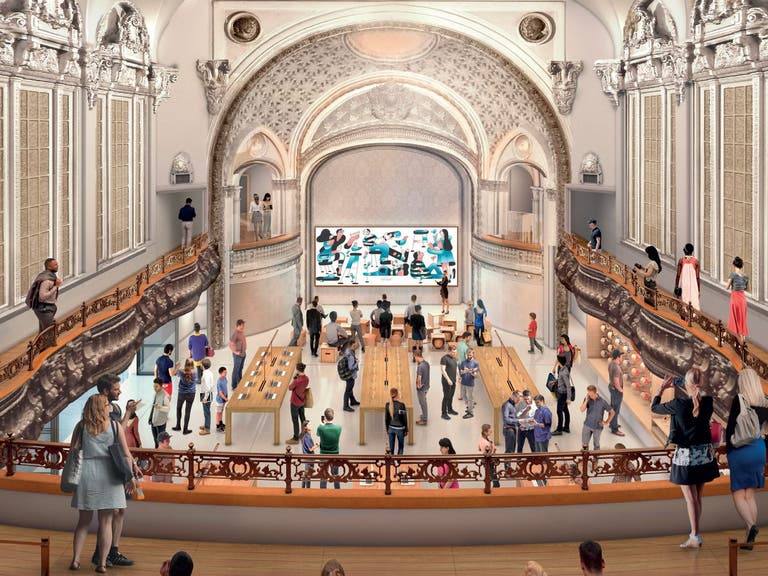
Tower Theatre
Opened Oct. 12, 1927, the Tower Theatre was the first of more than 70 theatres designed by renowned architect S. Charles Lee, who also designed the Los Angeles Theatre, Bruin Theatre (Westwood), Fox Wilshire Theatre (now known as the Saban Theatre in Beverly Hills), and the Max Factor Building, which houses the Hollywood Museum. Lee designed the theatre in a "modified French Renaissance" style that included French, Spanish, Moorish and Italian elements that were all executed in terra-cotta. The Tower was the first movie theatre in L.A. wired for sound. On Oct. 5, 1927 a sneak preview of The Jazz Singer - the first feature-length motion picture with synchronized dialogue - was held at the Tower. The groundbreaking musical premiered Oct. 6 at the Warner Theatre in New York, paving the way for “talkies” and signaling the end of the silent film era. The Tower Theatre was designated Los Angeles Historic-Cultural Monument #450 in August 1989.
In August 2018, Apple unveiled plans to renovate the Tower Theatre into a flagship Apple Store.

Palace Theatre
The Palace Theatre opened June 26, 1911 as the third Los Angeles home of the Orpheum Vaudeville circuit. It was originally known as the "Orpheum" and is the oldest remaining Orpheum theatre in the country. Designed by architect G. Albert Lansburgh and based on a Florentine early Renaissance palazzo, the luxurious new theatre had almost 2,000 seats on three levels, with no seat farther than 80 feet from the stage. The décor was elegant and subdued, dominated by shades of gold, pink and blue. Marble walls and mosaic tiles were used throughout the lobbies, and the basement featured a paneled men’s smoking lounge with a fireplace. The ladies lounge upstairs had windows overlooking the outer lobby and included a marble fountain. Renamed the Broadway Palace Theatre in 1926, it became a silent movie house and later added sound. The Palace Theatre was designated Los Angeles Historic-Cultural Monument #449 in August 1989.

Million Dollar Theatre
Opened Feb. 1, 1918, the 2,345-seat Million Dollar Theatre was the first movie house built by legendary showman Sid Grauman, who would later open Grauman's Egyptian Theatre and Grauman's Chinese Theatre (known today as TCL Chinese Theatre) in Hollywood. The Million Dollar Theatre is the northernmost of the historic movie palaces in the Broadway Theatre District and is located directly across from the landmark Bradbury Building. The Million Dollar Theatre is part of the Grand Central Square project, which also includes the revitalized Grand Central Market and the Bradbury. The facade is a striking example of Churrigueresque decoration, a Spanish Baroque style known for elaborate ornamentation. To accent the facade, sculptor Joseph Mora crafted heroic figures and symbols of Western Americana, such as bison heads and longhorn steer skulls. Movie fans will recognize the Million Dollar Theatre its numerous film appearances, such as the sci-fi classic Blade Runner, (500) Days of Summer and The Artist. The Million Dollar Theatre was added to the National Register of Historic Places in July 1978.
